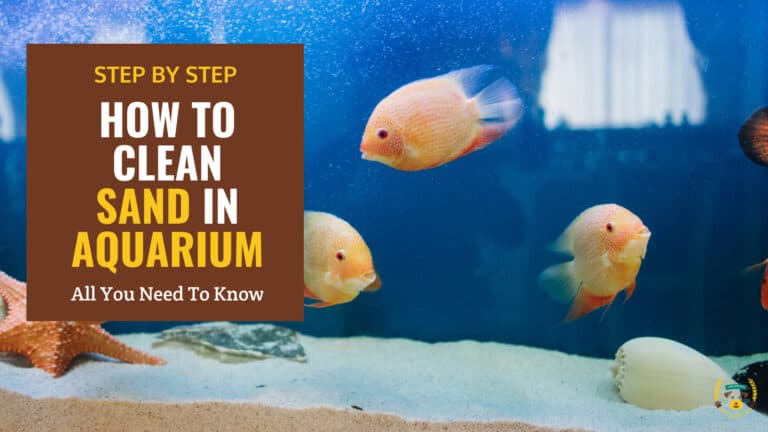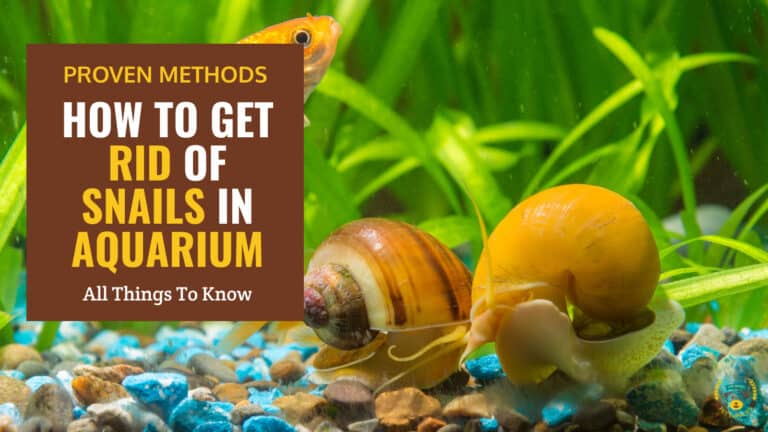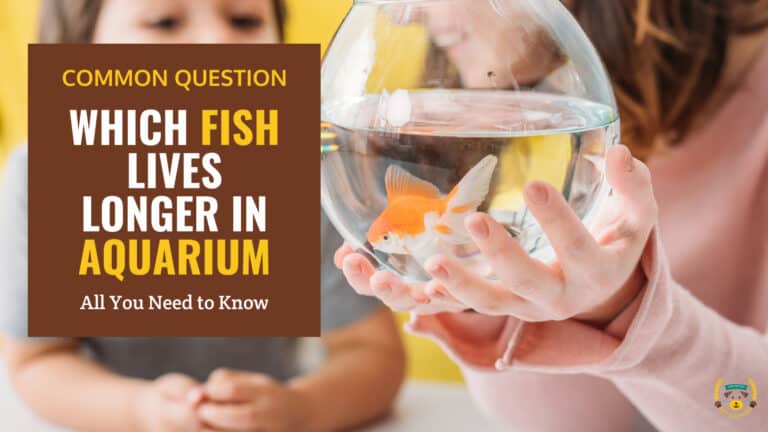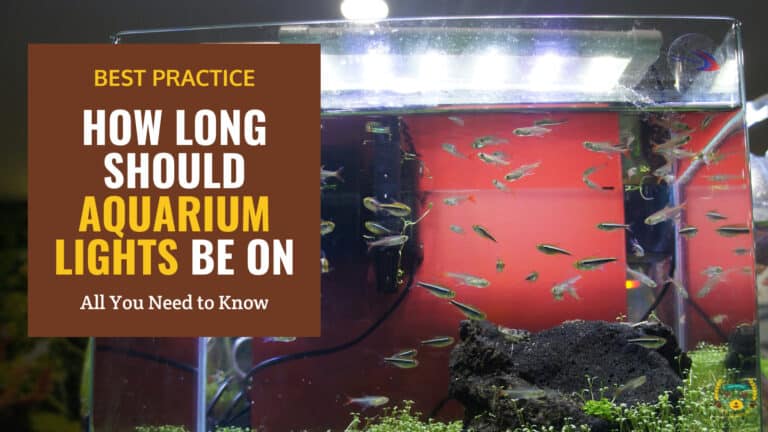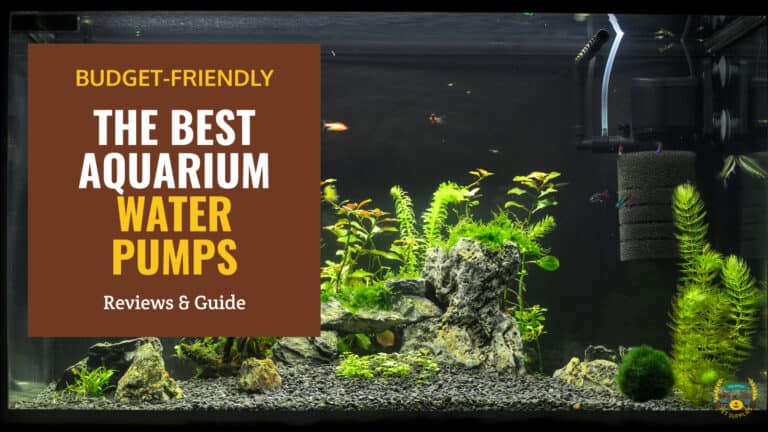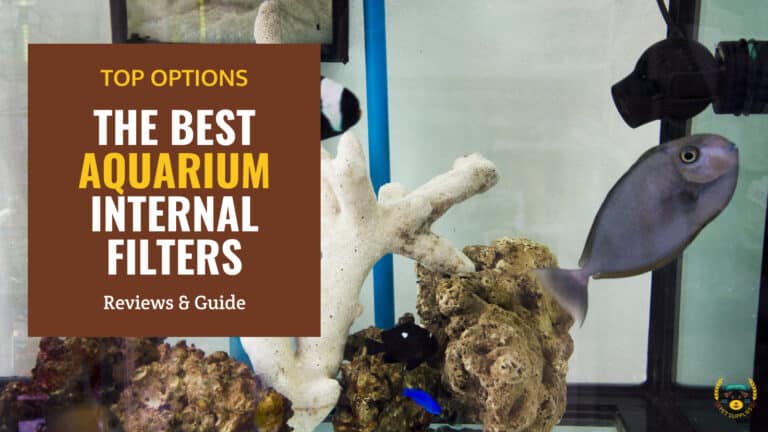How to Lower PH in Aquarium Safely and Naturally: Top Proven Methods
Last updated: March 9, 2024
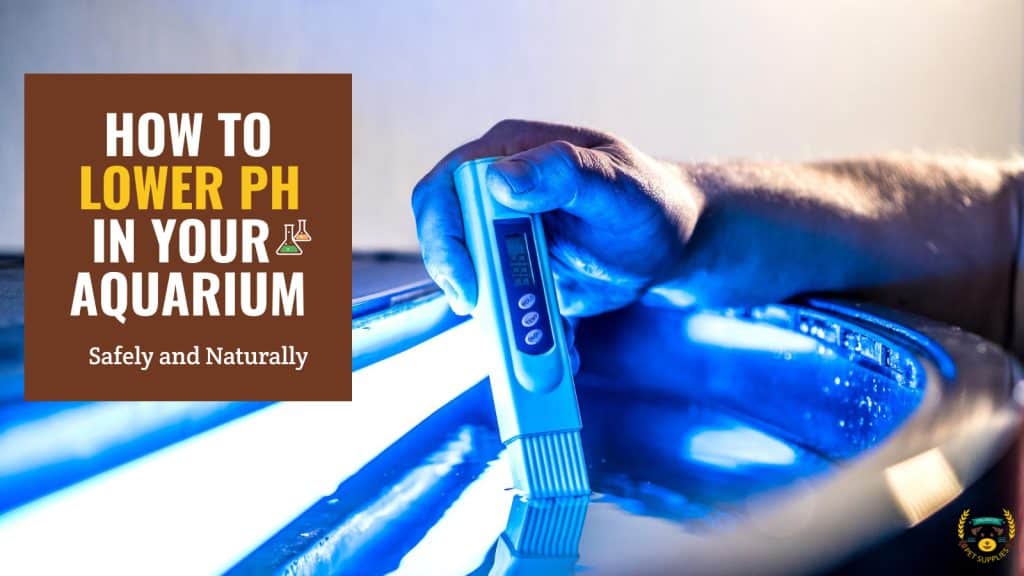
Summary
- A pH of 7 is neutral, while a pH below 7 is acidic and a pH above 7 is alkaline.
- There are many factors that can cause high pH in aquariums, such as the type of substrate used, the presence of natural rocks and decorations, and a saltwater or freshwater aquarium.
- If you notice your fish are getting sick or less active, it may be caused by a high pH level in the water.
- Peat moss is a spongy material that is formed from decayed plant matter.
- Driftwood is a piece of wood that has been floating in water for a long time.
- Almond leaves are the leaves of the almond tree. They are a popular way to lower the pH level in aquariums because they contain tannins and other compounds that lower the pH.
Fish are some of the most widely adopted home pets. A lot of people love to keep aquariums with colorful fish because of the beauty and serenity they can add to their homes. Watching those amazing creatures can be enough to calm you down after a long day of work and stress.
However, fish are also extremely fragile creatures. Everything can easily affect them by making them sick or even killing them. Therefore, you need to pay special attention to things like food, filters, and the aquarium water quality (including the temperature and contents of water that must be adequate at all times to avoid harming your little fishies).
Checking the PH levels in your fish tank on a regular basis is of utmost importance. You want to keep it balanced because if the PH level is too high or too low, your beloved fish will certainly not survive for very long.
If you want to learn the best ways to balance the PH level in your fish tank naturally, just keep reading through this article. We will provide all the information you need to know for you to properly take care of your fish and keep them safe!
Happy reading!
You May Also Like: Fish Keeping Basics Guide
- 1) What Is pH in Aquariums?
- 2) What Causes High pH in Aquarium?
- 3) When Is It Necessary to Lower the pH in Aquariums?
- 4) How to Lower the pH in Your Aquarium Naturally?
- 5) How to Lower pH in Aquarium with Vinegar?
- 6) How Often Should You Test the pH Level in Your Aquarium?
- 7) How to Properly Test pH in My Aquarium?
- 8) Why Is the Right pH Level Important for Your Aquarium?
- 9) The Consequences of Having Incompatible P H Levels in Your Fish Tank
- 10) Final Thoughts
What Is pH in Aquariums?
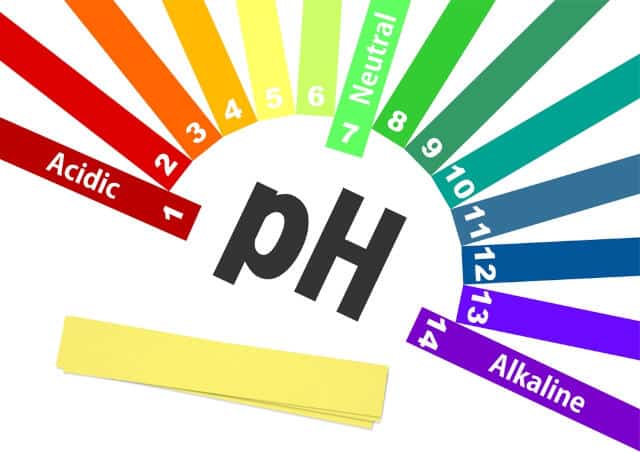
The acronym "P.H." stands for 'Potential Hydrogen'. It is a scale that is used to determine the levels of Hydrogen in liquids (including water) and how active the hydrogen ions are. It is also used to determine the water quality inside fish aquariums using a P.H. meter.
As we mentioned before, it is crucial to keep the P.H. level in your fish tank water balanced. If it is too high, the fish die; if it is too low, they die! Measuring the P.H. level uses a scale of between 0 and 14. The level determines the acidity or alkalinity of the water.
Water with a lower P.H. level (Lower than 7) is more Acidic water that contains a higher concentration of H+ ions. On the other hand, water with a higher P.H. level (higher than 7) is said to be more Alkaline water (Also called Basic). A PH level of 7 is neutral; it is the level that is usually measured in Pure water (Distilled or purified water).
Keeping the appropriate water PH level depends mainly on the species that you are keeping and their origins. The reason is that different types of fish have different preferences and naturally live in different ecosystems (rivers, lakes, seas, oceans, etc.). Each species requires specific acidity or alkalinity levels.
What Causes High pH in Aquarium?
There are many potential factors that can increase the PH level in your aquarium water and make it more alkaline. These include the type of substrate you are using for your fish, whether you are using natural rocks and decorations, a saltwater or freshwater aquarium, a water filter that is not working properly, etc. Everything you use in your aquarium setup may affect the water chemistry, eventually affecting its PH.
For instance, the plants you keep inside the aquarium can absorb two key elements that usually lower the PH level: Carbon Dioxide and Nitrates. As the nitrate and carbon dioxide levels decrease in the tank, the food sources start raising the water PH level.
Check Also: How To Reduce Nitrates in Aquarium?
Moreover, a higher content of calcium in the water can cause higher PH levels. Some calcium-rich rocks and gravel can dissolve in the aquarium water, leading to elevated calcium and overall alkalinity levels (high PH).
If you ever notice your fish are getting sick or less active, it may be caused by a high PH level in the water. Still, before taking any measures to fix the problem, make sure you use a PH meter to identify the PH level, just to stay on the safe side!
When Is It Necessary to Lower the pH in Aquariums?
Now, you may be asking yourself how to know when to lower the PH in your fish tank. Nowadays, most sold fish pets are bred in captivity, meaning they can adjust to more variation in PH levels and water conditions compared to wild-caught fish.
However, if your fish seem inactive or sick, then lowering the PH may become a necessity. That's why you should measure the PH level regularly.
If you check online, most sources will tell you that your fish will thrive in neutral water with a PH level of 7. While this is true, going after the perfect number is not always necessary, as sometimes this can do more harm to the fish. It would be better to have a stable PH level of between 6.6 and 7.4 (or even 6.2 and 7.8) than have it constantly fluctuate between 7 and higher numbers. Always favor stability over perfection.
Moreover, sudden changes in PH levels can seriously stress and harm your fish. Therefore, if you notice any instability or sudden rise in the PH level, you need to try to make things right and lower it. This can be done by partial water replacement (you can use tap water on one condition: let it sit for some days or use a dechlorinator to get rid of chloride).
How to Lower the pH in Your Aquarium Naturally?
What are the best ways to lower the PH in an aquarium? There are many possible solutions; using chemicals is one of them, but we do not favor it because we like to keep things as natural as possible. That's why chemicals will be our 'last resort' (It is last in our list).
Peat Moss

Peat moss is an excellent natural remedy to the issue of high PH in aquarium water. It can filter out the contaminants such as ammonia. It also releases gallic and tannic acids that reduce the hardness of water by attacking bicarbonates in the water.
Peat moss is widely available for purchase in pet stores in the form of pellets or chunks. However, since it can turn the aquarium water yellowish (or brownish), it will be better to keep it inside the water filter or treat it for some days in a separate bucket before you put it in the aquarium.
The amount of peat moss to use depends on how high the PH level is. It will be better to start with a small amount and keep monitoring the water and increase the amount of peat moss if needed.
Driftwood

Driftwood is also great and safe to lower the PH in your aquarium. It contains tannic acid, so it will cause some discoloration in the water (without causing any harm to the fish). In addition, it is usually present in fish's natural wild habitat, making it perfect for use in fish tanks.
Just bear in mind that not all types of driftwood are safe to use inside aquariums. You need to make sure it's safe for the little fishies. Other types of driftwood, such as the one used for reptiles, may look tempting to use, but it may contain some chemicals that can potentially harm the fish.
Before using driftwood in your aquarium, ensure you wash it thoroughly or even boil it in salt water to sterilize it and remove any impurities, fungi or algae that may have formed. This will also reduce the degree of discoloration in the tank water.
Almond Leaves (catappa)

Terminalia Catappa, also called Indian Almond, is a tropical tree that grows up to 90' tall. Its fruit seeds are edible when fully ripe. They taste like almonds (that's why the tree is called Indian almond). The leaves of this tree can be used to naturally and safely lower PH levels in aquariums.
Almond leaves are believed to possess antioxidant and anti-inflammatory properties. As a result, they can heal and even prevent some fish diseases.
In addition, the leaves add to the overall aesthetics and beauty of the fish tank. They will be highly appreciated as a hiding spot for fishies that like to hide.
Almond leaves can cause coloration to the aquarium water, but it will be barely noticeable compared to the previously mentioned methods (Driftwood and peat moss). Still, the leaves need to be soaked before use to reduce the coloration effect to the minimum.
Floating plants
Another natural method to consider for lowering the pH in your aquarium is the use of floating plants. Floating plants not only enhance the aesthetics of your tank but also contribute to a more stable and slightly acidic pH level. Here's how they work:
Floating plants, such as Water Sprite, Water Lettuce, and Duckweed, can create a shaded area in your aquarium. This shading reduces the intensity of light reaching the submerged plants and encourages the release of carbon dioxide during photosynthesis. As a result, the carbon dioxide levels increase, leading to a gradual decrease in pH.
Check Also: Best Floating Plants for Aquarium An ultimate Guide
In addition to their pH-regulating benefits, floating plants provide other advantages. They serve as hiding spots for your fish, reduce algae growth by competing for nutrients, and help maintain water quality by absorbing excess nutrients. The combined effects of these plants make them a valuable addition to your aquarium.
While the pH-lowering effect of floating plants might be less pronounced compared to some other methods, it's a natural and gentle way to create a stable environment for your fish. However, be sure to monitor the floating plant population, as they can multiply quickly and potentially block too much light if they become too dense. Regular pruning and maintenance are essential to keep them in check.
Reverse Osmosis Units
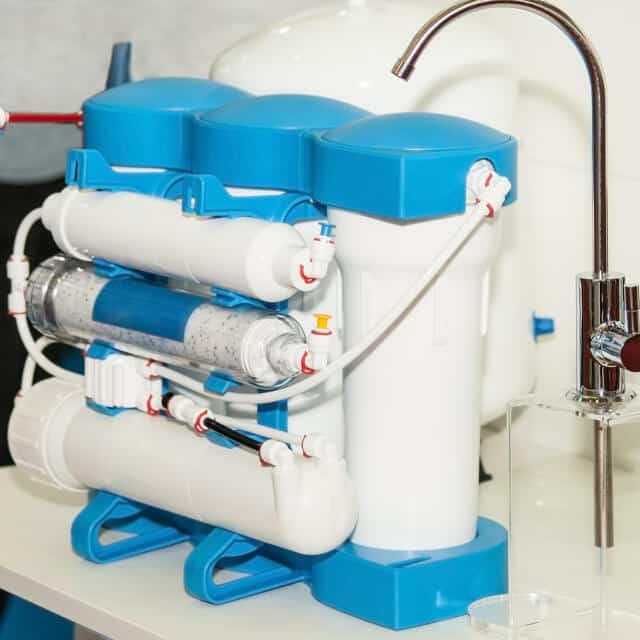
Reverse osmosis units (R.O.) are filters that use pressure to force water through a semi-permeable membrane: a filter that lets lighter molecules (water- H2O) through while catching any heavier molecules and impurities, including arsenic, heavy metals, pesticides, large ions, etc.
Reverse osmosis filters are the best way to lower P.H. in your fish tank. They do a great job cleaning the aquarium of almost all contaminants and impurities that can harm your fish (up to 99%). The results are durable and perfect, and an optimal P.H. level will be constantly maintained with an R.O. filter.
R.O. units provide the best results compared to any other methods discussed before, but they cost much more. You will need to make the initial investment of the unit which can cost you hundreds of dollars, but you should bear in mind that you will need regular replacements of the filters and perhaps, this guide for the best filter for large aquariums will help you in choosing which is which.
Moreover, these are sizable units, which makes them more suitable for larger aquariums.
This is the best method to keep your beloved fishies happy if you can afford the extra investment!
Decrease Aeration in The Tank
One very cost-effective way to lower PH levels is to keep aeration in the tank to a strict minimum (and thus reduce the oxygen level).
Lower oxygen levels mean more carbon dioxide in the tank. Carbon dioxide has the property of lowering PH in the aquarium water by dissolving and causing it to be more acidic.
Even though this is an effective solution that costs almost nothing, it is still risky. You need to pay attention not to lower the oxygen level too much, as this can kill your fish. Remember that they are living creatures that need oxygen to survive!
Using chemicals
Chemicals must be your last resort, and you can use them after trying other safer natural methods. Also, you need to consult a professional before using chemicals in your fish tank.
The slightest miscalculation of the amount of product to use can cause severe problems or even kill your beloved fishies.
Moreover, you should stick to reputable brands that make trusted products like 'Fritz' or 'cordon'. The products are usually labeled 'water softener', 'PH reducer' etc.
Some products use chemicals (acids) that are dissolved to reduce PH levels by raising acidity. Others contain more natural substances like tannis or other organic elements that have acidic properties.
Cleaning the Aquarium to Maintain Stable PH
This is something you can try combined with other methods. Regular water changes can lower PH levels in your aquarium water.
When you flush the dirty water out of the tank, make sure you clean everything, including the decorations, gravel, filters, plants, etc. By doing so, you can remove most of the trapped impurities that can cause PH levels to be higher.
However, it is essential to remember not to expose your fish to abrupt changes in PH levels. You can start by changing water and cleaning the aquarium. After that, it is preferable to wait for some time before you start using other methods to lower the PH. This will give your fish enough time to adapt to the slighter PH level drops in water.
Check Also: The 10 Best Aquarium Heaters
How to Lower pH in Aquarium with Vinegar?
White vinegar can be used to lower the PH level in your aquarium. This is another cost-effective but temporary method that works well!
It is preferable to use vinegar with fish tanks that contain plants, as they can absorb the extra dissolved elements left by vinegar water after some time. However, if you don't have any plants, using this method can be unsafe for the fish. So this is not the safest nor most durable solution!
Vinegar works in two stages once it's added to the tank water. First, vinegar has an immediate effect on the tank water by ionization. Simply put, it is the process of releasing hydrogen ions in water, which can instantly decrease PH levels by 0.2 - 0.3.
The second stage begins a few hours after adding vinegar to water. The acetic acid (vinegar), combined with oxygen, will turn into carbon dioxide, a key element in lowering PH levels.
While this is an easy method, make sure you don't add too much vinegar to the tank. This may hurt or even kill your fish (PH will be lowered too much too fast). The recommended safe amount to use is 1ml of vinegar per gallon of water.
How Often Should You Test the pH Level in Your Aquarium?
Everything related to your fish tank water (all parameters, including PH) needs to be tested at least once a month. However, if your fishies are sick, the PH test must be conducted both before and after treatment. All test results should be written and kept for future reference and comparison.
To be on the safe side and detect any potential problems before they become serious, it is preferable to test the PH level every two weeks.
Please bear in mind that PH levels can fluctuate and be different every day or even during different times of the day. Testing the level in the morning and then in the afternoon can give you different results, even if nothing is wrong with the aquarium. It is advisable to perform the test at the same time of day each time to get the most possible accurate levels.
Moreover, whenever a fish dies in the tank, the test must be performed. If you want to add new fish to your tank, you need to check with the seller and test PH. Make sure the difference in PH between your tank and that of the seller doesn't exceed 0.2 (above or below) to ensure the new fish won't have any problems.
How to Properly Test pH in My Aquarium?
There are several ways to test PH in your aquarium. They include :
Using a pH meter
You can buy one from a local pet store or online stores like Amazon. These meters are very useful for testing PH levels. However, keep in mind that they are expensive and require calibration. Moreover, they cannot measure PH levels accurately when there are many things in the tank, such as plants, gravel, and decorations.
Using paper strips
These strips are cheap and widely available everywhere. Just dip them in the water and read the color. The darker the strip, the more acidic the water is.
Paper strips are more accurate and quantitative, as they give a color that you can compare to the provided color key chart to get a specific number of how acidic or alkaline your tank water is.
Using litmus paper
Litmus paper is also known as litmus test paper. You can find it in most pet stores and online stores. When dipped in water, litmus paper turns blue if the water is alkaline and red if it is acidic.
This is a pass or fail test. Instead of giving a specific value, it just tells you if the water is acidic (Blue paper turning red) or alkaline (Red paper turning blue). Neutral water will not affect Litmus paper.
Using a PH indicator kit
This is another way to test PH levels in your aquarium. Kits come with all the necessary materials needed to do so. Some kits contain only one type of material, while others offer multiple options.
You can use a small plastic test container that you fill ( halfway) with sample water from your aquarium, add some drops of the PH indicator solution. After that, gently shake the test container and compare the color to the chart on the solution bottle.
Suggested Reading: Top 10 Best Aquarium Water Test Kits
Why Is the Right pH Level Important for Your Aquarium?
First off, there is no such thing as a 'normal' PH level. Every fish species requires different conditions to live in an aquarium, including a PH level that is closer to the one in its natural habitat.
We need to make a distinction between saltwater fish and ones living in fresh water. Usually, saltwater fish tolerate higher levels of PH. They usually thrive in PH levels around eight or above.
On the other hand, different species of freshwater fish will require different PH levels to be healthy. Thus, you need to test the PH in your freshwater tank before adding any fish to it.
Here are some example values that are required for certain species of fish:
- Neon Tetra 5.8 - 6.2
- Plecostomus 5.0 - 7.0
- Silver Dollar 6.0 - 7.0
- Goldfish 7.0 - 7.5
- Harlequin Rasbora 6.0 - 6.5
- Hatchet fish 6.0 - 7.0
- Tiger Barb 6.0 - 6.5
- Zebra Danio 6.5 - 7.0
- Angelfish 6.5 - 7.0
- Clown Loach 6.0 - 6.5
These are the ranges at which these types of fish thrive. If the water PH level goes below or above that range for too long, it may harm your fish!
The Consequences of Having Incompatible P H Levels in Your Fish Tank
Incompatible PH levels in your aquarium can have more or less severe consequences on your aquarium fish. Here are some examples:
If the pH level in your aquarium is too high, then the fish will suffer from respiratory problems. This includes gills issues and breathing difficulties. It can even lead to death.
If the pH level is too low, then this will cause a lack of oxygen in the water. This will result in suffocation.
Having incompatible PH levels can also cause stress and behavioral issues in your fish. For instance, fish that live in alkaline environments tend to become aggressive when they feel stressed.
On the other hand, those that live in acidic environments will often become lethargic and depressed when the PH is incompatible and water more alkaline).
That's why it's always important to make sure your fish tank water has appropriate PH levels within the tolerance range for your fish species. That's the way to ensure that they are happy and healthy.
Suggested Reading: The 10 Best Canister Filters For Aquariums
Final Thoughts
Keeping fish at home is no easy task. It means paying attention to so many things that can affect the fishes' habitat and affect them negatively.
The PH level in your water tank is one of the most important things to keep an eye on because it can significantly affect the fish's health and energy levels. You need to keep PH levels within the range of tolerance of the fishies you are keeping. If you fail to do so, your beloved fish may get sick or even die.
In this article, we went through the topic in detail. We explained what PH refers to, how it works, how and when to test PH levels, etc. We also provided reasons why checking aquarium PH levels regularly is very important, how to do it properly, and the right numbers to look for with every type of fish you may keep in your tank.
We believe that you will find all the necessary information you will need to keep your fish in good health. So, if you have been thinking about getting yourself a fish tank with a few beautiful fish pets, we believe you are ready to do it now. Just do your homework, choose the types of fish you want, and make sure they are comfortable in their new habitat!
If you still have questions, do not hesitate to contact us!

